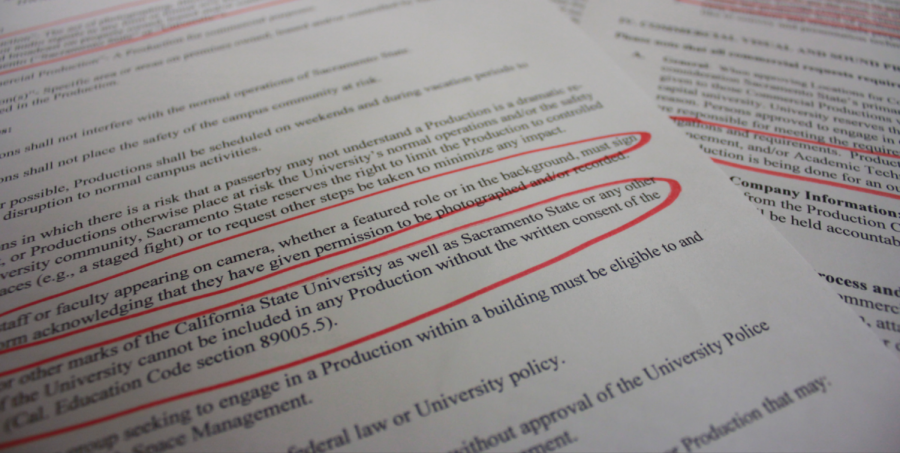EDITORIAL: Unwise recording policy shows Sac State’s cards
Claire Morgan – The State Hornet
As it’s currently written, Sacramento State’s policy, which was announced on Feb. 8 via SacSend, outlines rules that can apply to anyone who wishes to create visual and audio content on campus, including students filming on their smartphones, according to Student Press Law Center Senior Legal Fellow Frank LoMonte.
February 22, 2018
It appears that before writing, codifying and ratifying an entire set of regulatory rules on recording any kind of audio or video on the Sacramento State campus, the school’s University Advancement office failed to do the most basic assignment given to any student — the homework.
RELATED: Sac State media policy to be revised following concerns it is unconstitutional
The homework in this case was making sure that the six-page — seven if you count the release form attached at the end — document they were passing off as policy was actually legal or at all enforceable.
Sac State is now trying to walk back how official this official document was, saying it wouldn’t be used to go after students.
Funnily enough, that’s actually the opposite of what was written in President Robert Nelsen’s SacSend email notifying the campus community of the new rules.
“This policy applies to anyone who will be filming or recording on property that is owned, leased, or controlled by Sacramento State,” the email read. “Please read the policy and procedures carefully as the guidelines may impact student projects, faculty assignments, and commercial productions.”
At no point does the policy say when a student may be exempt from the rules, or outline what cases would or would not be exempt.
The link to the procedures was broken, making reading that portion carefully a breeze. The policy link worked, making that one a little more difficult.
So, unlike any of the lawyers currently employed by the University, apparently, we read the policy and have a few notes.
It seems frankly unbelievable that a policy of real importance such as this one, supposedly worked on over the course of “four to five years,” according to Sac State Public Information Officer Craig Koscho, would have such cases of broad, unenforceable rule-making.
If it was truly a group project as Sac State says it was, than whoever was in charge of making sure the proposed rules were legally sound (ideally, lawyers) either didn’t do their job or weren’t informed.
It also seems frankly embarrassing that the University continues to obsess over making Sac State look good rather than worrying about actually being good.
It is, of course, the job of the University Advancement office to make sure that the University looks good in the public eye. But to go so far as to pre-screen the “professionalism” of news outlets and prepare campus officials and professors for interviews is a blatant attempt at sending the message that unless a story makes Sac State look good, it wants no part in it.
Perhaps it would seem silly to act surprised at this point; getting in touch with an administrator or professor at the center of a controversial topic is a constant process of interview requests, denials and referrals to the University’s public relations employees.
After repeated concerns from administrators, professors and students, including repeated questions from The State Hornet, the University is now revising the policy.
We can only hope that this time — maybe by doing the minimum due diligence of making sure a policy is legally sound and has a specific audience — it won’t need more revisions.





























































































































